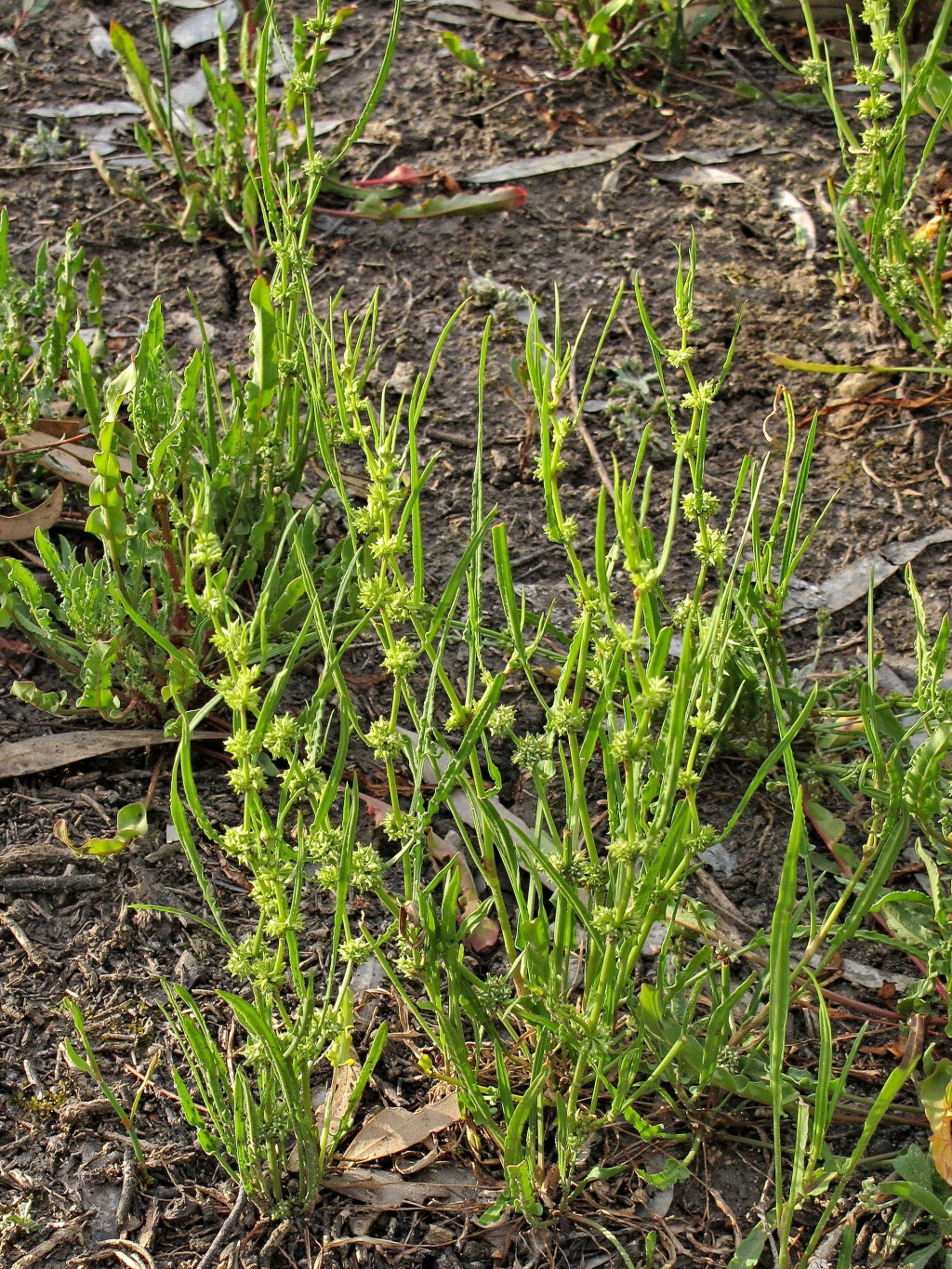Rumex
Annual or perennial herbs, mostly with a basal rosette of leaves, with or without cauline leaves, usually taprooted (rarely rhizomatous or tuber-producing). Leaves petiolate to subsessile, not articulate; ochreas short, glabrous, tubular, truncate or erose, brownish, membranous, soon disintegrating. Flowers mostly bisexual, clustered in false whorls at nodes of spike or panicle-like inflorescences; perianth segments 6, sepaloid, the inner 3 enlarging and variously thickening in fruit (here called 'valves'), often developing marginal teeth or spines, and/or spongy or corky dorsal callosities, usually much exceeding nut; stamens 6; stigmas 3, delicately fringed. Nut trigonous to triquetrous, enclosed by the fruiting perianth.
About 160 species, cosmopolitan but mostly Northern Hemisphere; 13-15 species in Australia, 7 naturalized.
Rumex frutescens Thouars is a South American species which was collected on Coode Is. near the mouth of the Yarra River in 1908 and 1912, but has not been seen in Victoria since that area was greatly modified by harbour works in the early 1900s. It differs from other species in Victoria in its long, hardened rhizomes, and the rather fleshy (when fresh), obovate or elliptic leaves that are more or less evenly tapered at the base and apex. The fruiting valves resemble those of R. crispus but have a longer, fusiform callosity.
Numerous hybrids within the genus have been recorded, involving several of the species keyed below. Hybrids have been noted within (and in one instance between) introduced and indigenous species. Some of these have been formally named, e.g. R. ×schulzei Hausskn. (R. conglomeratus × R. crispus), R. ×muretii Hausskn. (R. conglomeratus × R. pulcher), R. ×pratensis Mertens & Koch (R. crispus × R. obtusifolius), R. ×pseudopulcher Hausskn. (R. crispus × R. pulcher), R. ×johannis-moorei Rech. f. (R. brownii × R. crispus) and R. ×comaumensis Rech. f. (R. bidens × R. brownii).
Walsh, N.G. (1996). Polygonaceae. In: Walsh, N.G.; Entwisle, T.J., Flora of Victoria Vol. 3, Dicotyledons Winteraceae to Myrtaceae, pp. 272–295. Inkata Press, Melbourne.
 Spinning
Spinning


